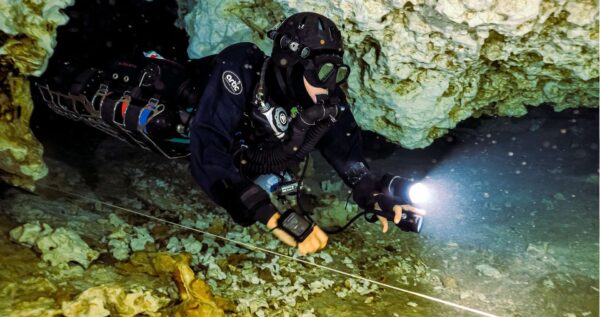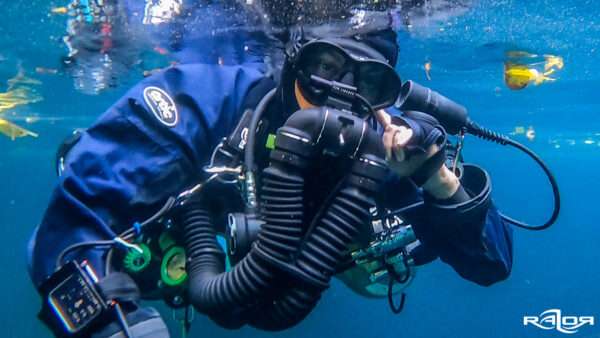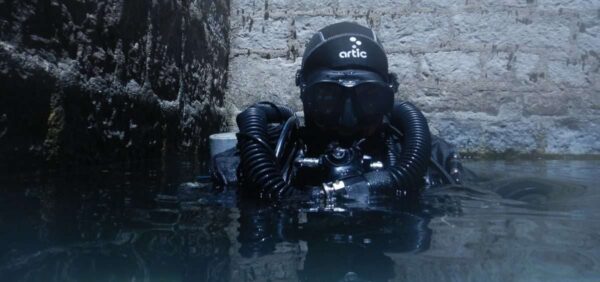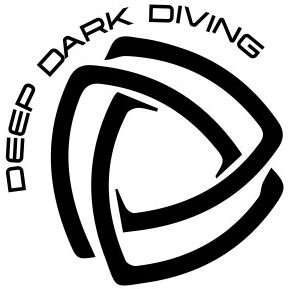Whether a beginner or an experienced rebreather diver, you’ve undoubtedly encountered many misleading and inaccurate statements. Sorting fact from fiction can be daunting, often requiring extensive research on diving forums, literature, CCR divers, CCR instructors, and the opinions of supposed “CCR experts.” In this article, we aim to clear out some of the most common myths and misconceptions surrounding rebreathers with confidence and clarity.
Rebreathers Simplified
Contrary to popular belief, rebreathers, while technically advanced, operate on the same fundamental principles: replacing the diver’s metabolized oxygen, removing produced carbon dioxide, and repeating as necessary. While manufacturers employ unique approaches, the core concept remains consistent.
Rebreathers: Beyond Emergency Tool
A rebreather should not be viewed solely as a tool for extraordinary dives beyond open circuit capabilities. Without regular practice and training in controlled environments, a rebreather diver may not be adequately prepared for challenging dives requiring mastery of skills. Consistency and skill mastery is crucial for effective emergency management during rebreather diving.
Rebreathers For Enjoyment, Not Just Necessity
While a limited number of divers genuinely need rebreathers for military, scientific, or commercial purposes, most divers engage in rebreather diving for recreational pleasure. Despite added complexity, many divers find it more enjoyable than open-circuit diving, and this personal choice is entirely valid.



Your Rebreather is Friend, Not Enemy
Contrary to the myth that your rebreather is out to kill you, your CCR is designed to keep you alive. Accidents often result from improper assembly, inadequate maintenance, complacency, and neglecting pre-dive checks rather than an inherently malicious machine.
Rethinking the Prebreathe of your CCR
The belief that a 5-minute pre-breathe effectively validates scrubber performance is being challenged. Recent studies suggest that while pre-breathing remains essential for checking various system functions, relying on them to assess CO2 absorption may not be accurate. The focus should shift to ensuring the proper function of gas addition, monitoring systems, and electronics.
Read the full article: The five-minute prebreathe in evaluating carbon dioxide absorption in a closed-circuit rebreather: A randomised single-blind study
Limitations of Diluent Flush to check your CCR O2 Cells
While a diluent flush is valuable for checking loop PO2 and identifying some cell errors while rebreather diving, it may not reveal issues with current-limited cells at higher PO2s. Ignoring this limitation could lead to dangerous situations, emphasizing the need for close monitoring and awareness.
Read our blog post about rebreather Oxygen sensors.
Checklists Save Lives
The debate on checklists persists, but well-crafted and consistently implemented checklists have proven effective in various fields, including medicine and aviation. Properly created checklists are vital for rebreather divers, enhancing safety and preventing oversights.
In 20+ years of TDI as the leading technical diving training agency, these insights reflect our commitment to promoting safe rebreather diving practices. For those interested in rebreather training, the TDI Closed Circuit Rebreather (CCR) Air Diluent Diver Course – MOD 1 offers a transformative dive experience, providing the essential skills for rebreather exploration. Learn more about diving with a rebreather.






